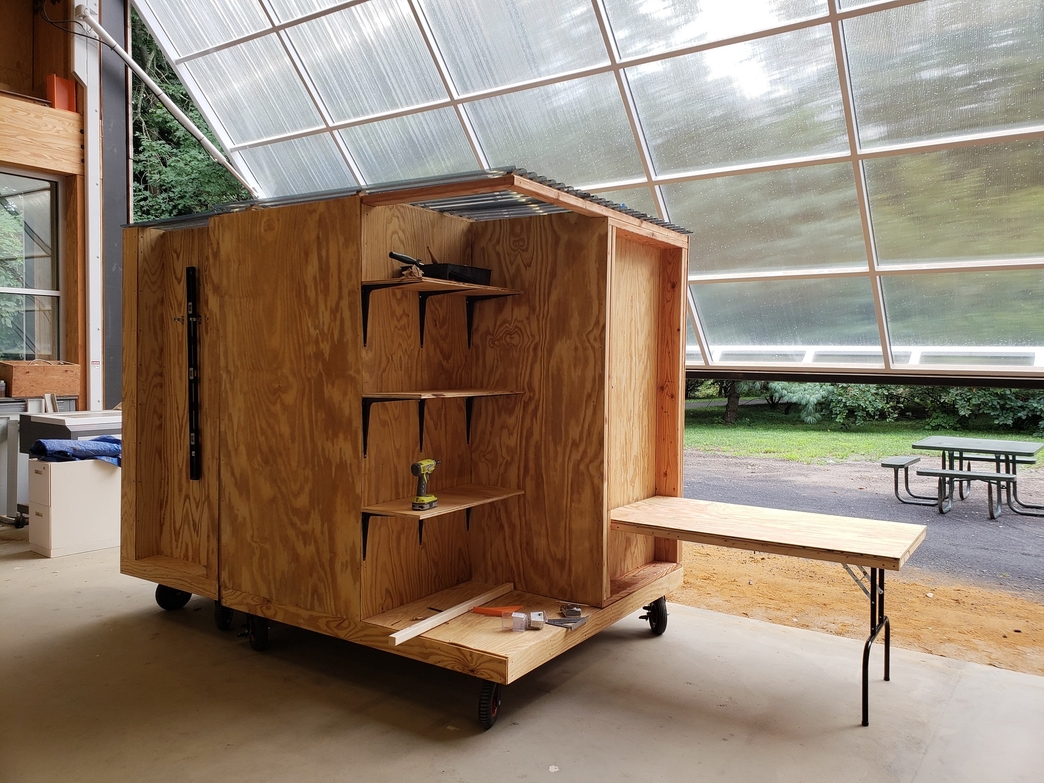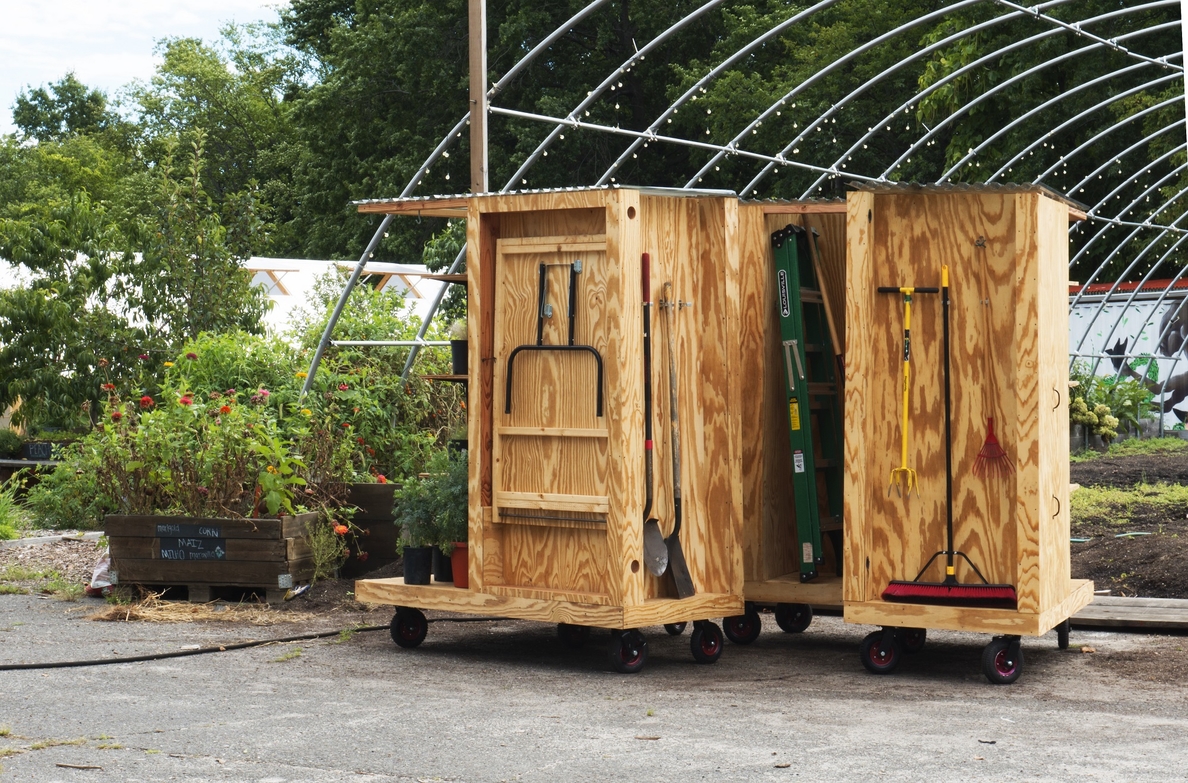On patch of dusty asphalt in Newark, New Jersey sits a wooden shed topped with corrugated plastic, a safeguard from impending winter weather. But it won’t be there for long.
That’s because the shed is intended to roam around Down Bottom Farms, a half-acre plot bearing a fruit tree orchard, berry patches, and even a small vineyard. Built on wheels, the mobile storage system contains gardening tools and equipment easily accessible to the community gardeners who devotedly take care of the farm. The shed can also be split into two parts, providing even greater convenience.
The project was conceived by Princeton University students in conjunction with the course “Topics in the Formal Analysis of the Urban Structure — Environmental Challenges of Urban Sprawl” taught by Mario Gandelsonas, professor of architecture and the Class of 1913 Lecturer in Architecture. Graduate students Austen Kernodle (School of Architecture), Christine Philippe-Blumauer (Woodrow Wilson School), and Remi Kahwaji (Mechanical & Aerospace Engineering Program) designed the shed, which Kernodle built with the help of undergraduate architecture student Sophia Williams at the School of Architecture’s Embodied Computation Lab. Princeton Environmental Institute provided funding for the project.
Kernodle stated, “Inspired by the creativity of Down Bottom Farms, our team designed a project that was intended to spark the imagination of the already clever farmers and volunteers. The roaming shed system is a catalyst for the further reimagination of urban agriculture and how the farm engages the community.”
An interdisciplinary course, “Topics in the Formal Analysis of the Urban Structure — Environmental Challenges of Urban Sprawl” challenged students to address the entanglements between water, energy, and urban sprawl from a perspective informed by architecture, urbanism, and the humanities. Students aimed to identify sustainable solutions sensitive to issues like water resource management, energy efficiency, technology innovation, human and environmental health. Down Bottom Farms served as their case study.
Gandelsonas explained, “Students were tasked to develop a project centered on issues of food and urban agriculture with a focus on ‘food deserts’ in Newark. This collaborative project involved different disciplinary approaches given that it was meant to intervene in the world through design, diagnosis, and policy proposals.”
For some students, Down Bottom Farms served as more than a case study. “When I first visited the farm, I was inspired by the children’s attitude,” said Kahwaji. “I was touched by their life experiences, which were often not easy. I felt like the farm was not just a place growing things, but a productive, healthy, and safe environment where these young ones themselves were growing. The shed started just like any other conceptual academic project but ended up being an example of how Princeton students can channel academic excellence into impactful projects in their community.”
Christine Philippe-Blumauer said of her experience, "Working on this project was one of the most rewarding experiences I had during my time as a Master in Public Affairs Student at the Woodrow Wilson School. Being part of an interdisciplinary team, where I could apply my policy skills to the real world and see a project through from beginning to end was thrilling and definitely one of my grad school goals. It was an instance where Princeton students, from different disciplines and backgrounds came together and made the University’s motto — in the nation’s service and in the service of humanity — come true.”







